Roundtable Forum
Our 24th Year
July 2021
In this issue.
Roundtable Opening Remarks
The Roundtable's 4th Decade
Opening Midway42.org
79th BOM Anniversary at the Pearl Harbor Aviation Museum - Part 2
Jimmy Thach and the History of the F4F
"The Battle of Midway 101"
Restored Yorktown SBD Headed to Pearl Harbor
Give Me Courage and Luck
WW2 Aircraft Designations
The Eagle's Claw
|
The Battle of Midway Roundtable Opening Remarks

Welcome to the July Battle of Midway RoundTable. This month the newsletter content was created by Ron Russell and is much appreciated. We have quite a few good articles as well as some helpful hints on reading the newsletter if you are having trouble on various devices. Again if you do experience problems let me know. There are a few things I can do on the web page to tweak it a little. However some content displayed is due to personal settings in your browser like having the zoom on a little too much. So check that as well.
In case anyone missed the two-part BOM anniversary presentation by the Pearl Harbor Aviation Museum, we have good news: the two segments were recorded and we have links to both. The first part was cut short because of technical problems, so the museum decided on an extended Part 2, which has quite a bit of additional content. They are well worth your time.
THE ROUNDTABLE’S 4th DECADE
Here are two messages from a couple of our members, commenting on the reopening of the Roundtable after its half-year of hiatus:
1. From Bill Longton, 21 June 2021
With the reopening of the BOMRT, I just wanted to take a moment to express my appreciation to you all for building, growing and maintaining this site. I first learned of the Battle of Midway when I was 14 years old, and my father took me to see the 1976 movie. From that day forward through today, I regularly read any publication on the battle to glean any more information possible.
That being said, every time I feel I have read all that there is to know, I am forced to admit that there is so much more to be known. I appreciate all of the contributions that come through the BOMRT as I comb through each and every detail to add to my knowledge of that fateful struggle. You have no idea just how valuable a thing this site is.
2. From Manuel Gil (Barcelona, Spain), 11 June 2021:
Happy to know this achievement is done. Thanks very much for your efforts. After twenty-five years and still receiving these appreciated e-mails of the Battle of Midway Roundtable. My best wishes for you all.
We sincerely thank Bill and Manuel, as well as others who also sent in very nice comments about getting the Roundtable underway again—you saw several of them in the June newsletter.
It really is amazing that we are now into our fourth decade, starting with the 1990s and now pushing on into the 2020s. We’re also looking forward to our silver anniversary on the Internet next year: October 2022 will mark 25 years since Chris Hawkinson first started promoting Bill Price’s BOM email circular on his remarkable website. We’ll need to think of some special way to celebrate that special occasion, and your suggestions will definitely be welcome.
OPENING MIDWAY42.ORG ON YOUR P.C., MAC, PHONE, OR OTHER DEVICE
Immediately after turning the rebuilt Roundtable loose on the Internet, Thom and I started testing it with various devices and browsers to see if anything didn’t work. Within a couple of days we’d found good results in just about every browser, plus Apple and Android phones. That doesn’t include a number of tablets or specialized devices, so if anyone has any experience to share, please pass the word.
Any time you launch a new website, it’s normal for someone to initially have a problem with it. Usually, an adjustment on the user’s end will solve it, as I found when I tried it with the Firefox browser—somehow, my default zoom setting had been reduced to 60% and the BOMRT was impossibly small. A couple of clicks fixed it. Otherwise, the site displays smartly on a Windows 10 p.c. with just about any browser. It tested fine in Edge, Chrome, Firefox, and Internet Explorer 11, and if the Safari in my iPhone is any indicator, it’s probably fine on a Mac as well.
Still, there’s no guarantee that every device or app will be compatible. John Mattson reported that his Samsung S8 phone initially refused to show a full page despite zooming and swiping, but he eventually fixed it by tinkering with the Samsung browser. If someone has another problem that’s eluding a solution, let us know—if I can’t find an answer with my available resources, we have a large community of savvy IT users on the Roundtable; someone else may have the answer.
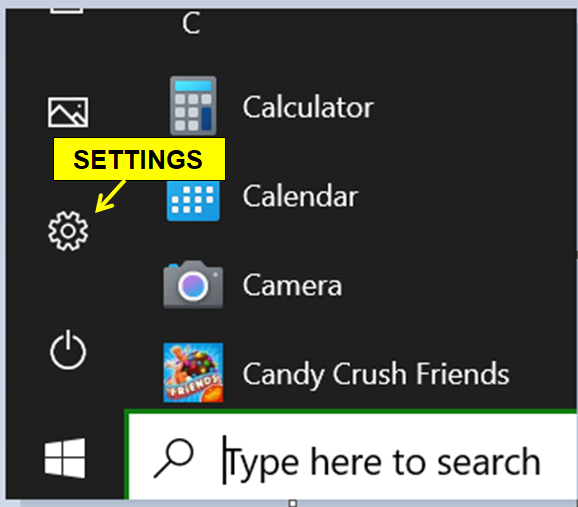
John Mattson also provided a Windows 10 hint that may be helpful to some members: if you find that the contrast on your screen seems weak or dim, try the High Contrast option in your system settings. To do it, click the Start button (or tap the Windows key), then Settings (gear icon near lower left), then Ease of Access, then High Contrast in the main menu. Turn the slide switch on or off and note the difference. John says it can be a big help if you have senior-citizen eyes.
—RR
79th BOM ANNIVERSARY AT THE PEARL HARBOR AVIATION MUSEUM – PART 2
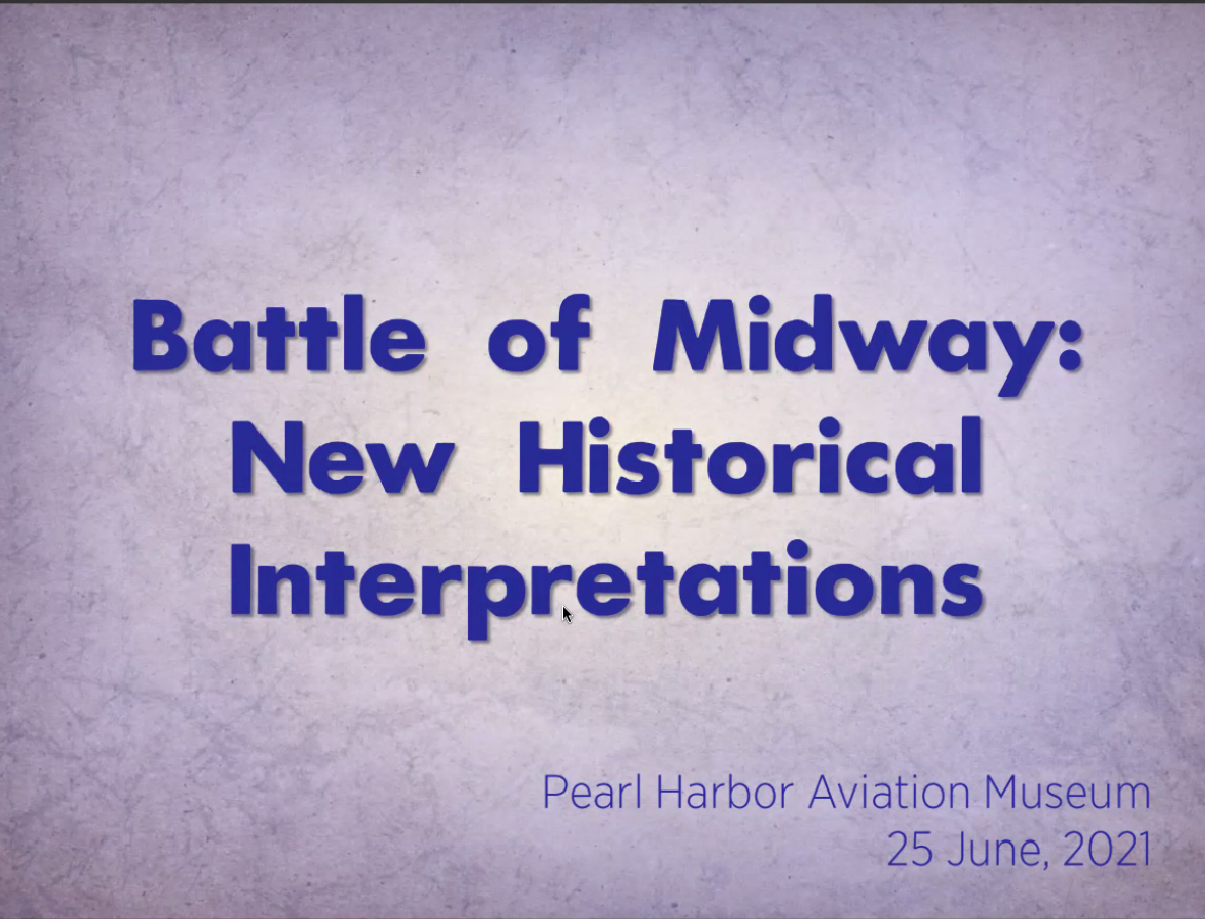
Our lead article in last month’s newsletter was about the June 4th seminar conducted online by the Pearl Harbor Aviation Museum to commemorate the 79th anniversary of the BOM.
Click here
for a review of the article if you haven’t seen it.
The June 4th program was cut short due to a couple of Internet glitches, so the museum scheduled a supplementary program on the 25th to fill in what got missed on the 4th. That turned out to be fortuitous, as the extra hour in Part 2 afforded a lot of additional information about the battle plus questions and comments from the attendees who logged in from around the world. The program hosts once again were Jon Parshall and General Dan Leaf (USAF-Ret), a vice president of the museum.
The principal focus of Part 2 was Admiral Nimitz’ strategy for the battle; the challenges he and his CINCPAC staff faced in defending both Midway and the Aleutians from what intel initially suggested would be a juggernaut against both. Planning had to allow for a worst-case scenario that initially seemed all too likely: Kido Butai arriving with five carriers (adding Zuikaku), and Yorktown’s damage being unrepairable in time for Midway—five carriers to two, instead of four to three. In that event, Nimitz envisioned whittling down the enemy through attrition rather than nose-to-nose confrontation, possibly even surrendering Midway to the invaders if that became unavoidable.
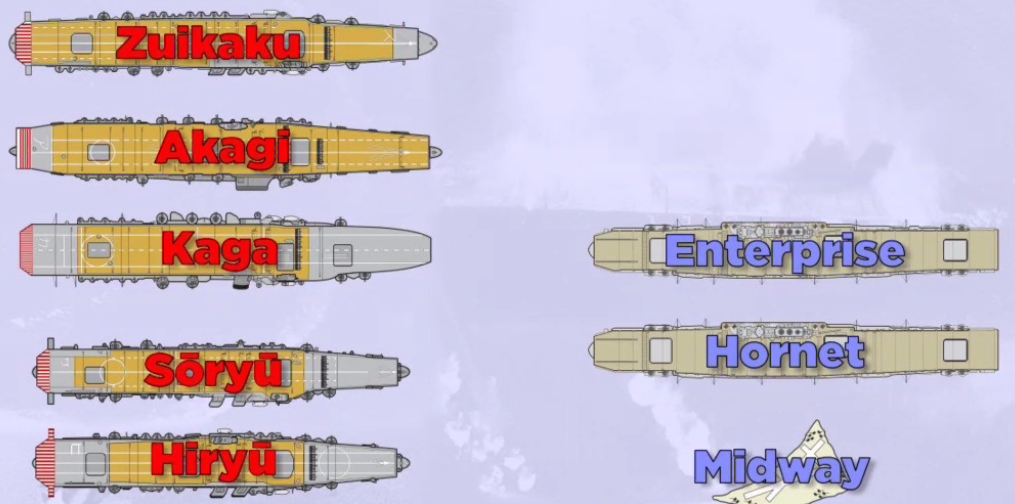
The worst-case scenario at Midway for which CINCPAC had to plan.
Jon also provided some key insight on “Point Luck,” which historians have sometimes portrayed inaccurately down through the years—it is typically described as the location from which the USN was to launch its attacks against the invading fleet. Not hardly, Jon pointed out, since that would’ve been impossibly out of range for Fletcher’s embarked aircraft. Instead, Point Luck was a “risk management tool,” a location from which the Americans could dash to a viable launch point if warranted, or in which they could safely maneuver out of danger if Nimitz’ “calculated risk” turned out to be too risky—as with five carriers to two, for example.

The Q & A with the audience was interesting, including one question about Jon’s early fascination with the Pacific war during his teen years. He admitted that the rumor was true—he’d been a fan of building small plastic models of Japanese warships, floating them in a nearby lake, then blasting them with his BB gun until they sank. Isn’t it interesting how a lifelong fascination can get started? (Full disclosure—I did the same thing at age 15 with a stick-and-paper model airplane having a four-foot wingspan, suspended on a string from a garden trellis. My “ack-ack” damage was awesome, much better than a computer game. Jon no doubt felt the same about his vanquished enemy fleet.)
We commend the Pearl Harbor Aviation Museum for taking the initiative to celebrate both the 78th and 79th anniversary of the Battle of Midway under pandemic conditions that have dissuaded other venues from making any attempt at all. If you missed either of the museum’s presentations, they’re worth your time and can be found on Youtube:
Part 1 (34 minutes):
https://www.youtube.com/watch?v=GGCwmRdmiuk
Part 2 (60 minutes):
https://www.youtube.com/watch?v=OLjEmQP4iKU
Bonus: here’s a separate Youtube video featuring Jon that was produced at about the same time as the Pearl Harbor museum’s program. It’s an episode of the “WWII Challenge Webinar Series,” in which Jon takes the viewer through a fast 30-minute overview of the Pacific War to 1944, accompanied by some great graphics. There is an additional 30 minutes of Q & A that provide additional insight. This is a good one for its brevity coupled with the factual clarity that one of our best naval historians can deliver:
https://www.youtube.com/watch?v=FQ6iuMl-ojY
—RR
JIMMY THACH AND THE HISTORY OF THE F4F
Zsolt Szalanczi in Germany sent us a link to the website of a Polish company, Arma Hobby, that is rolling out a new 1/72 scale model of Jimmy Thach’s F4F. But the site offers far more than that—you will also find the full history of the Wildcat plus extensive details about VF-3 at Midway, complete with the tail numbers of every one of the squadron’s planes that flew on the morning of June 4th, plus a great collection of images. There is also extensive coverage of the FM-2 Wildcats deployed in the Atlantic in antisubmarine squadrons aboard CVEs, with anecdotes about their success against U-boats.
It’s an excellent website; one that we can include among a few that provide a really thorough telling of the F4F’s story. Here’s the link:
http://armahobbynews.pl/en/blog/2021/06/11/f4f-4-wildcat-fighting-squadron-three-vf-3-and-jimmy-thach-in-the-battle-of-midway/
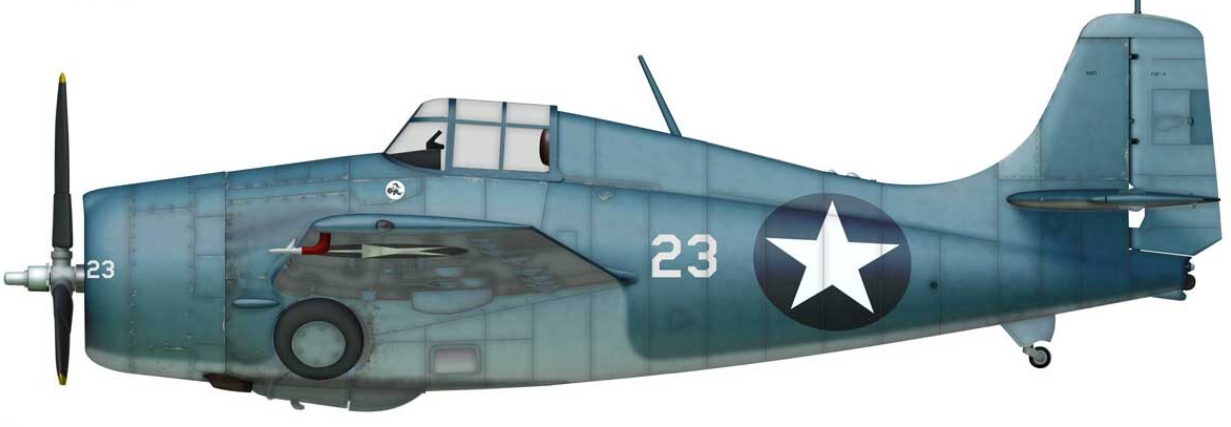
Jimmy Thach’s F4F flown on the morning of June 4th, from the new Arma Hobby website.
Editors Note: Model sites and modelers in general are very specific when building models that depict historical models. They always want to get it right if possible so they do a lot of research. I've seen some really impressive models over the years in our model contests.
"THE BATTLE OF MIDWAY 101"
Back in October 2020, Patrick Hill advised the Roundtable of an interesting video series on the BOM entitled The Battle of Midway 101. Jeff Petraska checked it out recently and sent in a report. It’s 22 lessons totaling 8.5 hours of video, covering the entire history of the battle. The producer is Gary Solomon, and the content of his course suggests that he indeed has a very solid grounding in the BOM from its origins to its aftermath.
That said, Mr. Solomon’s course is not for everyone. If you’ve been with the Roundtable for a while and have digested its recommended references like The Battle of Midway (by Symonds), Shattered Sword, and perhaps some others like A Glorious Page in Our History, The First Team, and Joe Rochefort’s War, then you already know the content of “BOM 101” and could possibly teach it yourself.
But everyone isn’t at that level. If you or someone you know would get a lot of benefit from a detailed study of the battle via a series of short videos that go well beyond the usual documentaries that you see on the History Channel or Youtube, it could be worth the one-time $25 fee.

Screenshot from Lesson 16: Best’s VB-6 attack on the Akagi.
In any case, keep your expectations modest. The imagery is very simple—I was reminded of early video games from the 1980s. On the other hand, what it shows is spot-on, so no complaint about the content. The lessons are accompanied by a lot of background music that you may or may not care for, and the monotone narration by Mr. Solomon didn’t leave me anxious to listen to him for more than a few minutes. But those are just personal impressions; someone else may be fine with what they hear and see. For example, Jeff thought that the animated God's-eye approach for illustrating the sequence of events in a long, complex naval battle was especially good.
At least there should be no risk: the site offers a full refund of the fee if you’re dissatisfied. Check these references for more information, and thanks to Patrick and Jeff for passing the word.
https://www.youtube.com/channel/UC0FsSEMVQu6xDhPtpEkBYqw
https://www.midway101.com/
—RR
RESTORED YORKTOWN SBD HEADED TO PEARL HARBOR
25 June 2021
From: John Seward
I would like to share with the Roundtable some photos of the progress of the restoration of SBD-2P #2173, which was aboard Yorktown at Coral Sea, and was offloaded at Pearl prior to the ship’s departure for Midway. #2173 later ended up at Glenview NAS, where it was used in training on the Great Lakes, and went into Lake Michigan following an engine seizure due to carburetor icing while attempting to land aboard one of the training carriers operating out of Navy Pier in Chicago. #2173 is currently being restored at the Kalamazoo Air Zoo, and is on target for a November transfer to the Pearl Harbor Aviation Museum in time for the observance of December 7th.
"GIVE ME COURAGE AND LUCK" – U.S. NAVY PILOTS AT THE BOM
Tom Rychlik sent in a link to an interesting BOM video presentation by Timothy and Laura Orr, co-authors with Dusty Kleiss on his autobiography, Never Call Me a Hero. Timothy teaches military history at a university in Virginia, and Laura is the deputy education director at the USN museum in Norfolk. Here’s the URL:
https://vimeo.com/564204334
To start the video, click the link on the right labeled “Give me courage.” The run time is 53 minutes.
Narrated mostly by Laura, the program is generally quite good despite a few quibbles. Roundtable members will instantly recognize numerous photos that are incorrect for the BOM era, and in too many spots the Orrs’ dialog exhibits a lack of solid familiarity with their subject matter. They occasionally use some non-authentic terminology, like referring to a destroyer as a “liaison ship,” or describing torpedo operations as “torpedo gunnery.” But the best of those was when Laura stated that the USS Hornet was “anchored to the pier” while in port. (!) Clearly, the two would have helped their credibility a lot by getting a qualified USN consultant to review their script before turning it loose—shouldn’t be hard to find someone in Norfolk.

Despite those relatively minor glitches, the program has a lot going for it. Laura is a very good narrator with a pleasant voice, and that helps a lot in a lengthy presentation. The theme for the program was the BOM pilots, focusing on their fundamental courage in carrying out their mission and their need for some luck in pulling it off. There were a lot of pilot and aircrew photos, mostly familiar but here’s one of Clay Fisher (VB-8) that was new to me. I knew Clay very well and thought I’d seen all of his wartime photos, so hats off to the Orrs for finding that one.
Bottom line: expect a few things to criticize, but focus on what the presentation gets right, and there’s enough of that to make it worth your time.
—RR
GOOD REFERENCE FOR WW2 AIRCRAFT DESIGNATIONS
Because of the lengthy campaign in getting our website rebuilt, a few newsletter topics from last year may never have been fully resolved. Here’s one from the May 2020 issue, sent by Paul Sanchez: is there a good source that defines the alpha-numeric designations for World War II aircraft such as “TBD” or “SB2U?” Bill Longton sent us a good candidate: Aircraft of World War II, by Kenneth Munson. The book is no longer published but used copies can be found on several bookseller sites. It was produced over time in two or more editions, as evidenced by its various front covers:

Here are some links where it can be purchased, and Google may show you more:
https://www.amazon.com/Aircraft-World-War-Kenneth-Munson/dp/0385071221
https://www.ebay.com/sch/i.html?_from=R40&_trksid=p2380057.m570.l1313&_nkw=%22Aircraft+of+World+War+II%22+Munson&_sacat=0
https://www.thriftbooks.com/browse/?b.search=%22Aircraft%20of%20World%20War%20II%22%20Munson#b.s=mostPopular-desc&b.p=1&b.pp=30&b.oos&b.tile
Bill says that regarding Paul’s "TBD" question, that means Torpedo
Bomber- Douglas, for Douglas Aircraft Manufacturing. In the same manner, "SB2U" breaks down to Scout- Bomber, and the Navy’s # 2 model from Chance-Vought Corporation, to which the government assigned the letter " U" in its system. Here’s a good online reference that provides some of the same information:
https://en.wikipedia.org/wiki/1922_United_States_Navy_aircraft_designation_system
But the Internet doesn’t always provide the full story. Bill’s suggested book may be a worthy addition to your library, especially since it can be found at a reasonable price.
Also, be aware that a Google search for the above title will land you on several similar choices that look equally interesting. If military aircraft books tend to draw and hold your attention, plan on some extra surfing time.
NEW BOM NOVEL: THE EAGLE’S CLAW
Author Jeff Shaara brings a famous name to the historical novel genre—works that accurately portray past events in the present tense, with imagined dialog that’s consistent with what the real characters might have actually said. His father Michael Shaara is known for The Killer Angels, about the Battle of Gettysburg; generally considered a classic for its accurate depiction of the battle and the key personnel on both sides.
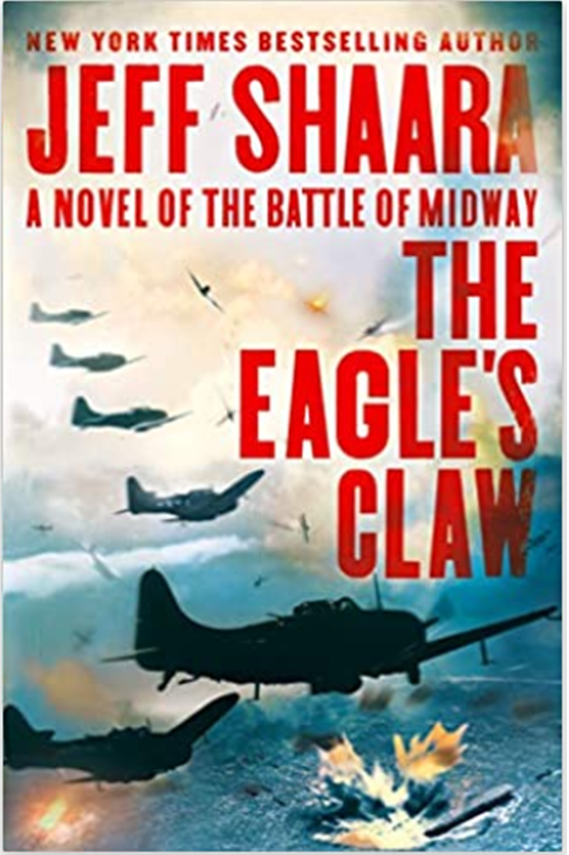
While many novels have had some portion of the BOM as an element, I know of only three in which the battle is the entire story. The first two are
Midway
, by Donald Sanford, and
The Silver Waterfall
, by Kevin Miller, and you can check their reviews on our website by clicking those two links. The third was released just last month: The Eagle’s Claw is Jeff Shaara’s attempt to portray the BOM in real time in the manner of Sanford and Miller. As we’re all too aware, Sanford’s novel, based on his screenplay for the 1976 movie, bogs down with made-up soap opera drama, although his nonfiction content is far better. Miller’s focus is primarily on the aviators and air operations on both sides, and he pulls it off nicely with factual events and authentic dialog. Shaara has a slightly different tack, attempting a running overview of the entire story of the battle on both sides: the codebreakers, the fleet commanders, the ship and aircraft crews, the Marines on the atoll, and even John Ford, complete with his shrapnel wound; all in just 317 pages.
Again, the value of this type of novel is that it puts the reader in the battle as it happens—you are there, as Walter Cronkite would say; a far different experience than simply reading history. But that presents a tough challenge for the author: to do it successfully, you naturally need to get the history right, and then your version of what each character is saying and doing must be true to known facts.
Sadly, The Eagle’s Claw fails badly on both counts. First, the factual flubs, and there are so many that I ultimately got tired of writing them down. Here are a few examples from my five handwritten pages: SBDs on the book’s jacket have the 1944 roundels. Fletcher is blamed for abandoning the Marines on Wake when he aborted his relief mission in December ’41 (that order came from CINCPAC). Rochefort concocts the water ruse to find out if AF refers to Midway. His uniform and military bearing in the presence of Nimitz is no different than his slovenly habits in the Dungeon. SBD pilots and gunners each have their own radio in the plane. F4Fs have radar, a “yoke” instead of a stick, and they escorted Midway’s bombers all the way to Kido Butai. Fleet tug USS Vireo is a “destroyer.” John Ford can’t get the Purple Heart for his wound from the air attack because he’s a civilian (he was a Navy commander at the time and got the Purple Heart).
Unfortunately, it gets worse. Shaara exhibits almost zero knowledge of common naval terminology and doesn’t bother to get help from someone who does. Here are a few examples that will make just about any sailor cringe, and remember that the idea in a historical novel is dialog that reflects what the real characters might have actually said: a corpsman carries a wounded pilot “downstairs” to sickbay. An officer walks through a “hatch” to enter a compartment. An admiral leaves a weather deck and goes “indoors.” Pilots’ ready rooms are called “briefing rooms.” A carrier’s flight deck is the “runway.”
But by far the worst glitch in the entire book is VF-3 pilot Percy Baker, who mysteriously replaces Dan Sheedy in Jimmy Thach’s 6-plane escort on the morning of June 4th. The problem, of course, is no such name appears on the roster of VF-3 or VF-42 at Midway, nor in any authoritative reference like The First Team or A Glorious Page In Our History, or even in a flawed one like Midway Dauntless Victory—you can’t even Google it. Yet Shaara presents him as an actual Yorktown pilot, complete with a detailed postwar biography at the end of the book! It’s nothing short of incredible; either a deliberate fraud on the author’s part or he was duped by another BOM wannabe who left behind a convincing fable of glory that Shaara didn’t bother to confirm.
In fairness, the book does have some positive points. Shaara develops the characters of Admirals Yamamoto, Nagumo, and Yamaguchi very well—aside from some naval terminology gaffes, their dialog is informative and believable. The ordeal of abandoning the Yorktown is gripping. The day-to-day pressure in HYPO accurately reflects what we learned on the Roundtable from Mac Showers and Phil Jacobsen.
But those plusses pale against Shaara’s embarrassing dialog and his abject carelessness regarding the battle’s true history. One is left with the impression that his main goal in writing the book was to do it fast and get it sold, banking on the likelihood that the average buyer will know little or nothing about inconvenient details that are just too much bother to research and get right.
Bottom line: save your $22 for something better. That would get you both of the other novels mentioned above and you’ll be much happier, even with Sanford’s soap opera.
—RR
|